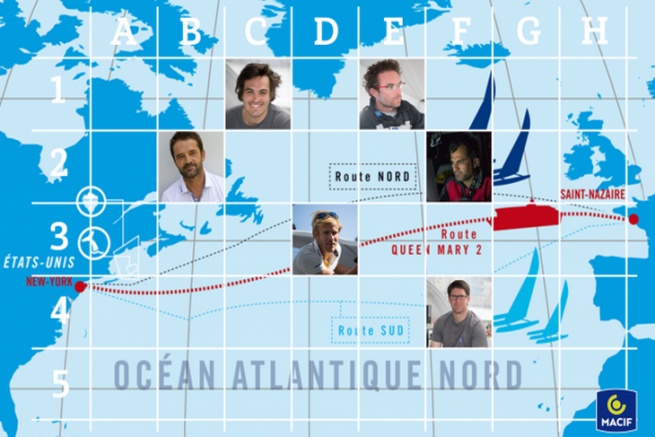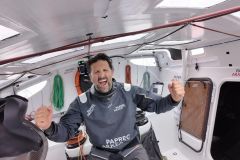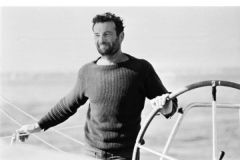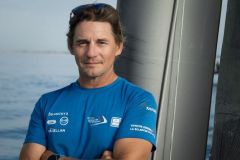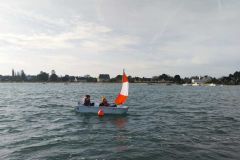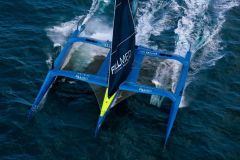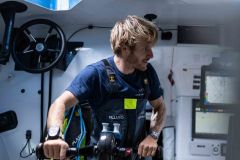After Thomas Coville François Gabart's turn to unveil the composition of his crew for the Bridge race which will pit the Ultimate against the liner Queen Mary 2 in a frantic Atlantic crossing in less than 7 days in June 2017.
Since the launch of its trimaran Macif on March 8th, François Gabart trained a lot in "solo" mode for the circumnavigation record he will start at the end of the year (and held by Thomas Coville since this winter). But he hasn't forgotten about his next race, The Bridge, which he will be racing in crewed configuration, accompanied by five sailors, which he is presenting to the public.
Pascal Bidégorry
"Pascal has been with us since the boat was launched, he knows her very well, we competed and won the Transat Jacques Vabre together. He also helped me prepare The Transat last year. He is one of the most experienced sailors in offshore multihulls. He is capable, both at the helm and on trim, of pushing the boat and making it go very fast, and that's what I expect from him on The Bridge."
Yann Riou
"Like me at sea, Yann will be the second crew member to have a task that only he will perform, that of taking pictures. I really like what he does as a mediaman and I hope that he will help me progress in this field, so that I can have some automatisms in view of the round the world voyage. But he won't just be a mediaman: he'll also be allowed to turn the cranks, to adjust, to steer... What's more, he has a real experience of the open sea, on the Mini, the Volvo Ocean Race and on other big trimarans."
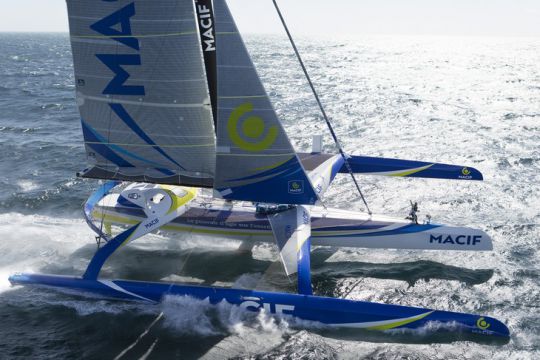
Antoine Gautier and Guillaume Combescure
"I'm presenting them together, as they are part of the technical team of the MACIF trimaran. I thought it was important, for the overall project, that they could see the boat in real racing conditions: this will feed into the list of ideas for the boat's future developments and both will be valuable sources of information for our router, Jean-Yves Bernot, during the next solo races. They're also real competitors, they're here to win the race!"
Benoît Marie
"He's the newest addition to the team! We've known each other for more than twenty years, because we've done Optimist together. We like each other very much. He has both offshore experience (winner of the Mini Transat in 2013, sailing in MOD70s) and experience of flying boats (in particular the hydrofoil Moth). He shares with us the desire to always sail as fast as possible. In addition to his qualities as a sailor, Benoit is constantly coming up with new ideas and he has this ability, which I really appreciate, to always question himself in order to progress"
Crew mode versus solo mode
François Gabart usually sails solo or double-handed. But for this race, it will be in a "crewed" version, which will considerably change the situation for sailing aboard Macif. However, the trimaran will not be reconfigured with a view to The Bridge. A choice perfectly assumed by François Gabart and his team: "As the project has been focused from the start on single-handed sailing, with three important milestones in three years (round the world record at the end of the year, Route du Rhum in 2018 and the round the world race in 2019), we remain focused on the ergonomics of the living area for a single person. The philosophy to be adopted by the crew will therefore be to adapt to the boat, rather than make it evolve. We'll no doubt be crammed into the cockpit, it'll be a bit like camping, but we'll manage to get organised! And it's going to last less than ten days..." explains François Gabart.
Faster maneuvers
Starting with the manoeuvres, which will be much quicker, as the skipper of Macif explains The first difference, of course, is the physical dimension. On manoeuvres, we go at least four times faster with a crew than when sailing single-handed, because there are four of us on the cranks to furl, tuck in, lower and hoist the sails, plus one crew member at the bow and one at the helm. That changes everything!"
More security and serenity
"Crewed sailing is much more comfortable in terms of stress. When sailing single-handed, there's constant tension, you always have to be on the alert, listening to the boat, even when you're resting. Whereas in crewed sailing, having two crew members on deck at all times listening and steering is much safer."
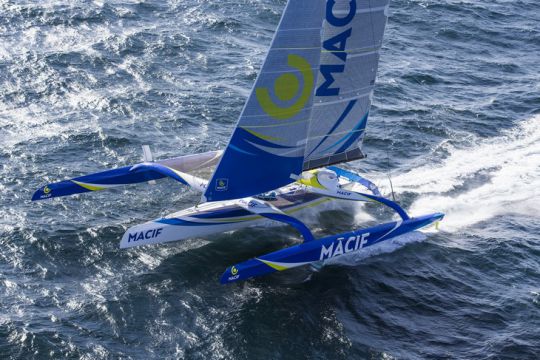
A boat pushed into its entrenchments
"Inevitably with a crew, we "attack" more, we change sails more often and steer 98% of the time. That means you can really sail on the line, on a float, and reach very interesting speeds, while having a higher level of safety. That's also what interests me on The Bridge; we're halfway between the launch of the MACIF trimaran and the Route du Rhum 2018. We've already made a lot of progress and it's going to be very interesting to push the boat very close to 100% of her potential, to find out her limits, which we can only do with a crew"
A different role for François Gabart
"On The Bridge, I'll be off watch, in charge of navigation, but also coordination. This role as a conductor, which is aimed at trying to get all the crew members to work in a good mood and efficiently, I like it! I've been doing it ashore for several years now and it's interesting to transpose it at sea. Of course I'm also going to blend in with the crew: I've had my bearings on the boat for almost two years by being on deck all the time, I don't want to change that. In view of the solo round the world voyage at the end of the year, it's vital for me to keep my sensations."
